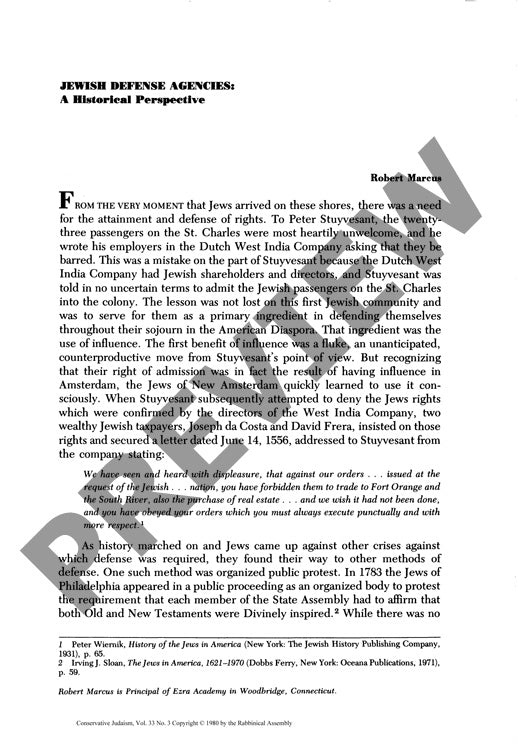Jewish Defense Agencies a Historical Per
Couldn't load pickup availability
From colonial intercession to modern civil rights advocacy, Jewish defense strategies in America underwent a remarkable transformation that shaped both Jewish communal security and broader democratic pluralism. The evolution began with informal methods like leveraging commercial relationships and organized protests, exemplified by the 1654 St. Charles incident and the 1783 Philadelphia Assembly protest, before developing into formal institutional responses. Historical analysis of primary documents and organizational records reveals how groups like B'nai B'rith, the American Jewish Committee (1906), the Anti-Defamation League (1913), and the American Jewish Congress (1920) emerged as sophisticated advocates for Jewish interests. These organizations progressively shifted from elite-led intercession (shtadlanut) toward coalition-building with other minority groups, expanding their focus from international Jewish concerns to comprehensive domestic civil rights programs. The American Jewish Committee serves as a paradigmatic case study of this transformation, demonstrating how Jewish defense agencies successfully adapted their approaches while maintaining distinct, complementary roles rather than duplicating efforts. This strategic evolution ultimately strengthened American democratic institutions while securing Jewish communal interests, creating a model for minority group advocacy that balanced particularistic concerns with universal civil rights.

More Information
-
Physical Description
-
Publication Information
Published 1980
ISBN
-
Publication Credits
Robert Marcus

